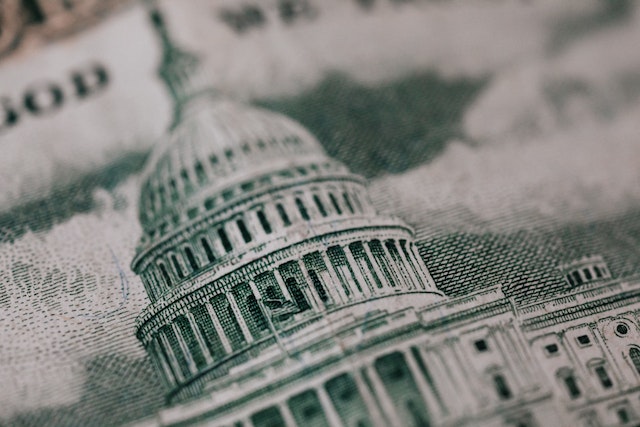As soon as next month, the federal government could hit its $31.7 trillion debt limit.
“Hide your kids, hide your wife and hide your husband ‘cause” the debt ceiling is coming!
Earlier this month, Treasury Secretary Janet Yellen said the federal government might not be able to pay its bills as soon as June 1.
The federal debt limit — also known as the debt ceiling — is:
“The total amount of money the U.S. government is authorized to borrow to meet its existing legal obligations, including Social Security and Medicare benefits, military salaries, interest on the national debt, tax refunds, and other payments.”
In short, it’s the limit on spending for things we’ve already earmarked for spending.
The principal holdup on raising it, though, is the federal deficit (and the interest we’re paying to finance it).
That debt stands at an astonishing $31.7 trillion, and Republicans want spending cuts before coming to an agreement with their Democrat counterparts.
However, no matter what your stance on the national deficit is, this isn’t when the government makes spending cuts. That process occurs when the president submits a budget to Congress by the first Monday in February each year.
But we wouldn’t be surprised if some members of Congress skipped Civics 101 and didn’t know that. Like this one. Or this one. And definitely this one.
Instead, the debt ceiling crisis we’re facing is about making payments on already-approved spending. So, Congress either raises that limit, as it’s done many times before, or we face the fallout of the alternative.
Pay Your Bills
While some politicians rail against the 22% of student loan borrowers who go into default because they’re unable to pay their bills, that same political cohort is now refusing to let the government pay its bills.
Not that anyone should be quoting Larry Flynt, but he did once muse that “hypocrisy is a detriment to progress.” Fairly insightful for a man who made his wealth peddling porn.
And in this instance, political hypocrisy is a detriment to progress toward a bipartisan debt ceiling solution that has happened time and time again throughout America’s history.
Keep in mind, the U.S. has never defaulted on its debt. But the current battle taking place in Congress is likely tied to partisan messaging in the lead-up to the 2024 election.
If the debt ceiling is allowed to be reached, we’re facing another government shutdown. And if that happens, it means:
- No visiting national parks on your summer vacation.
- No air traffic controllers or TSA workers at airports.
- A halt to federal loans for small businesses.
- All non-essential federal workers furloughed without pay.
- And environmental and food safety inspections cease.
History Repeats
According to a recent Statista poll, 62% of Democrats say Congress should increase the debt ceiling, and 55% of Republicans say Congress shouldn’t. But the latter likely boils down to who’s currently in office: a Democrat president.
Memory is fleeting, but revered Republican and debt-accelerating President Reagan oversaw 18 increases to the debt ceiling during his administrations. Another 20 increases came between Presidents Clinton, Bush 2.0 and Obama.
In total, the debt ceiling has been raised 78 times, 49 under Republican presidents and 29 under Democrats.
So this time, will Congress let the debt ceiling crisis play out? Probably. We now live in a world of TMZ-esque political drama, and the attention seekers on the Hill want their 15 minutes of fame.
Politicking aside, there is a clear way for you to benefit from this debt ceiling upheaval. Like when bank failures occur, government debt battles tend to induce outsized performance in one particular asset class, which has already produced a 26% gain over the past two months as the debt battle heats up.
On Monday in your next issue of The Big Idea, we’ll explain what that asset is and how you can position yourself to profit from the government’s inability to get its collective sh*t together.
TL;DR
Debt limit showdowns aren’t new and have been resolved by increasing the debt ceiling 78 times. Despite the political theater, there’s one asset that’s already appreciating amid Congress’ gridlock.

